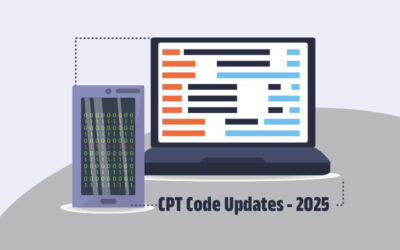As discussed in our last blog, chronic obstructive pulmonary disease (COPD) refers to certain associated chronic lung conditions that limit the airways and cause difficulties with breathing. It is associated with some other health conditions including emphysema and chronic bronchitis. Being National COPD Awareness Month, November is a great opportunity for physicians to help educate their patients about COPD. Several conditions fall under COPD, making its medical coding a difficult process. Before hiring a medical coding company to do the coding, pulmonary specialists must make sure that the medical coders there are well-versed in coding all these conditions.
When coding diagnoses of COPD and associated conditions such as chronic bronchitis, acute bronchitis, chronic asthmatic bronchitis, acute asthmatic bronchitis, emphysema and more, make sure to understand the coding consequences of the presence of two or more of these conditions, and check whether the condition is acute, chronic, or in acute exacerbation.
If a definitive diagnosis of COPD is not made, it is recommended to code only the symptoms.
According to the ICD-10 guidelines, “If the same condition is described as both acute (subacute) and chronic, and separate subentries exist in the Alphabetic Index at the same indention level, code both and sequence the acute (subacute) code first.”
When COPD is confirmed, report J44
- J44 Other chronic obstructive pulmonary disease
- J44.0 Chronic obstructive pulmonary disease with acute lower respiratory infection
- J44.1 Chronic obstructive pulmonary disease with (acute) exacerbation
- J44.9 Chronic obstructive pulmonary disease, unspecified
Asthma
If any type of asthma is applicable, use J45 as well as a Z code to identify any documented factors influencing the patient’s health status.
- J45 Asthma
- J45.2 Mild intermittent asthma
- J45.3 Mild persistent asthma
- J45.4 Moderate persistent asthma
- J45.5 Severe persistent asthma
- J45.9 Other and unspecified asthma
- J45.99 Other asthma
Environmental or Occupational Factors
Though smoking cigarettes is the leading cause of COPD, it has been reported that one out of six individuals with COPD has never smoked. Exposure to environmental or occupational irritants or even genetics can be other factors.
- Z57.2 Occupational exposure to dust
- Z57.31 Occupational exposure to environmental tobacco smoke
- Z77.22 Contact with and (suspected) exposure to environmental tobacco smoke (acute) (chronic)
COPD with Acute Bronchitis
- J20 Acute bronchitis
- J40 Bronchitis, not specified as acute or chronic
- J41 Simple and mucopurulent chronic bronchitis
- J41.0 Simple chronic bronchitis
COPD and Emphysema
Clinical documentation for COPD and Emphysema should include smoking history, chest CT results to identify the type of emphysema (centrilobular, septal, etc.), results of Pulmonary Function Tests (PFTs) as evidence for airflow limitation, and results of Diffusing Capacity of the Lungs for Carbon Monoxide (DLCO) test.
- J43 Emphysema
- J43.1 Panlobular emphysema
- J43.2 Centrilobular emphysema
- J43.8 Other emphysema
CPT® codes 94010-94799 can be used to report pulmonary diagnostic testing and therapy services, which include laboratory procedures and interpretation of the results.
To support PFT services, the provider must document the presence or absence of lung dysfunction, suggested by history or clinically significant physical signs and symptoms, or by other diagnostic tests. Medical billing and coding outsourcing is a great option for physicians to reduce these coding tasks and focus on patient care.




